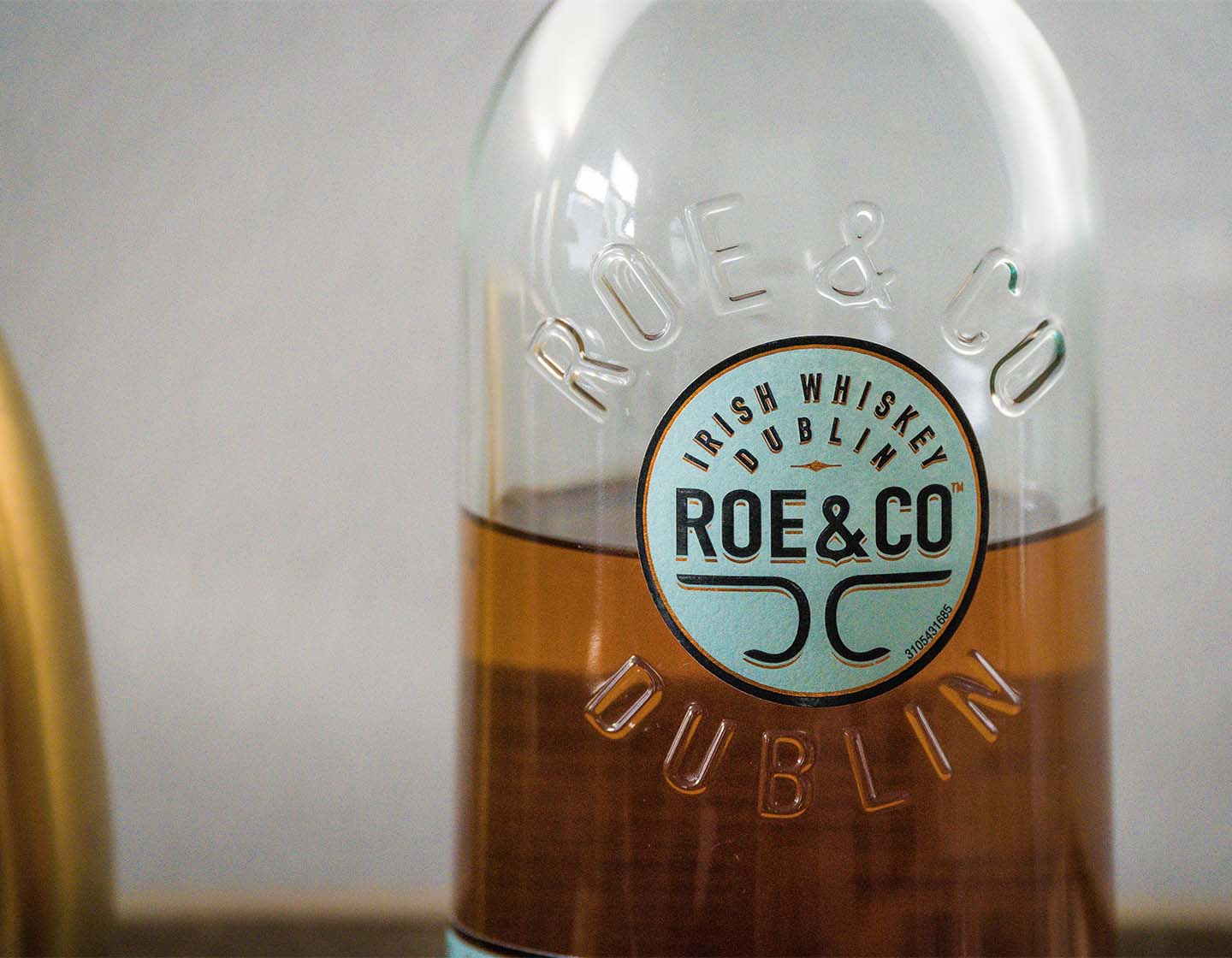
IRISH WHISKEY
Estimated Reading Time: 7 minutes
WHERE IT ALL BEGAN
The history of Ireland and whiskey go hand in hand. Irish whiskey is one of the oldest spirits in Europe, where distillation has taken place since the 6th century.
When religious monks first brought the technique to Ireland, they used it to create perfumes and “Eau de Vie”, otherwise known as “Water of Life”. The Gaelic translation of “Water of Life” is “Uisce Beatha” (Ishka Ba-ha), which over time was anglicised into the word “whiskey” that we know today. The first written records of whiskey in Ireland date back to 1324 and come from a medieval manuscript called the Red Book of Ossory, which shows Uisce Beatha being produced for consumption.
In the 19th century, Ireland was at the forefront of whiskey production, supplying 60% of the world’s supply. As production methods and techniques evolved, and with the increased availability of steam power, larger and bigger pot stills became the norm, with the number of distilleries in Ireland growing from 40 in 1823 to 86 in 1840.
In 1830, a tax inspector by the name of Aeneas Coffey developed and patented a more efficient method of distilling than traditional pot still batch production. The Coffey still or Patent still revolutionized the whiskey industry. This technology was widely adopted by Scottish Distillers, who felt that by blending the lighter grain whiskies (which were produced from the Coffey still) with the more intensely flavored malt whiskies, they could widen the appeal of Scotch considerably. However, in Ireland, the technology wasn’t met with such fanfare and was dismissed by distillers who chose to continue with traditional pot still distillation.
By the early 20th century, the Irish whiskey industry was in decline as the number of distilleries dropped dramatically due to several factors, including World War I, the Irish War of Independence, and the Civil War. An increase in excise and the closure of the US market due to Prohibition was compounded by the industry’s lack of uptake of new technologies.
In the last three decades, the Irish whiskey sector has been undergoing a global resurgence with increasing exports and ongoing investment taking place in the expansion and development of distilleries.
WHAT’S IN A NAME?
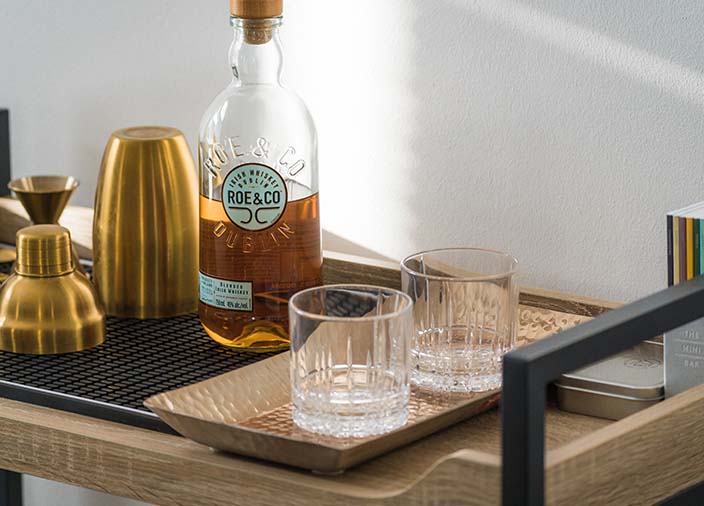
WHAT’S IN A NAME?
Why do the Irish spell ‘whiskey’ with an ‘e’ while the Scots don’t? In the 1800s there were many instances where the ‘e’ was missing from articles, legal documents, and advertisements. Hence, it is widely believed that during the 19th century, Irish distillers began to use the ‘e’ as a way to distinguish themselves from Scotch because of the increasing popularity and perceived higher quality of Irish whiskeys. These spellings became more or less fixed by the 20th century but the use of ‘whisky’ without the ‘e’ is still allowed.
HOW IT’S MADE
The Raw Ingredients
Irish whiskey is made from grains, water, and yeast. The key grains are barley (malted and unmalted) and corn.
The use of unmalted barley is one of the main differences between Irish whiskey and Scotch production. It began as a way to reduce the tax imposed on malted barley in the middle of the 19th century.
Unmalted barley contributes nutty and oily characteristics and is used only in the production of Irish Pot Still Whiskey.
The use of peat is minimal and only a small (but growing) number of Irish whiskeys are peated.
Malting, Mashing & Fermentation
There are several steps involved in making Irish whiskey, the first step being malting. The barley is put through a process called malting which is essentially steeping it in water to allow the barley to germinate, unlocking enzymes that will later convert complex starches into more easily accessible and fermentable sugars. External commercial enzymes are permitted in Irish whiskey production.
After germination, the grains are dried to stop further growth in a process known as kilning. The barley grains that have been dried are now considered ‘malted’. The malted barley is ground in large mills and produces grist which has a consistency of course flour. This grist is soaked/mashed in hot water and the resulting sugary liquid (called ‘wort’) is separated from the mashed grains. This sugary liquid is then transferred into washbacks, either traditional wooded or steel, where yeast is added. This part of the process is known as fermentation. Over the next 2–4 days the yeast works its magic consuming all the sugar and producing alcohol. The liquid is known as wash and has an ABV of 8–10%.
Distillation
Distillation allows us to separate and condense the alcohol from the incoming wash. There are two main types of distillation in Ireland, batch distillation carried out in pot stills which produces malt and pot still whiskey, and grain whiskey produced through distillation in column stills. Distillation using pot stills results in a more fully flavored spirit, while spirits distilled through column stills will be lighter and more delicate.
In Ireland, whiskey produced by batch distillation can be either double or triple-distilled.
Double Distillation
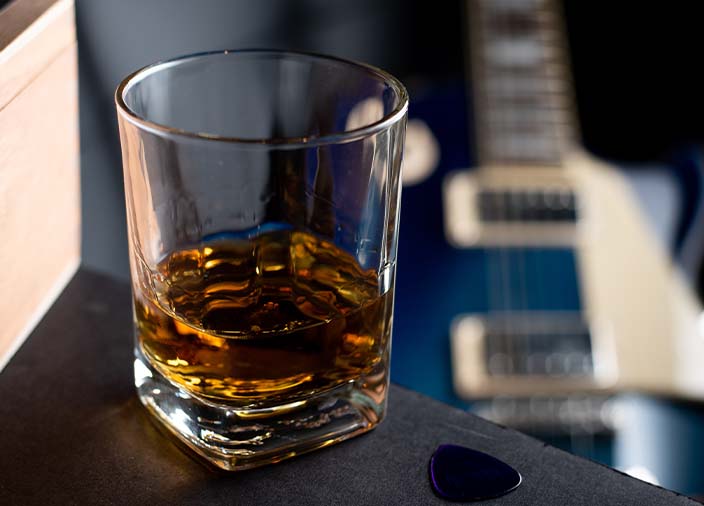
Double Distillation
Like the double distillation used in Scotland (see Scotch Whisky). The alcoholic is pumped from the washbacks to the wash still/first still. On its way, it is preheated with a heat exchanger to help make the process more economical. Once the still is charged, it is heated either with steam or gas. As the temperature increases, the wash heats and boils, and vapors start to rise up the neck of the still.
This vapor containing ethanol and flavor congeners rises to the neck of the pot still and continues over the swan neck and down the lyne arm into the shell and tube condenser (or worm tube in rare instances). The condenser cools the vapor, turning it back into a liquid called low wines with an ABV of approximately 20%.
The low wines are distilled in the spirit still but this time the distillation is broken into three sections or cuts. The first of these is known as the heads/fore shots, and the second cut is the heart/centre cut - this is the section we will use to make whiskey. The liquid is called new make spirit with an ABV of approximately 68-74%, and finally, the third cut or portion is known as the tails/feints. The heads and tails will then be recycled and redistilled in the wash still at the start of another run.
Triple Distillation
Triple pot distillation is closely associated with Ireland although it’s not a legal requirement. The extra distillation produces a more rectified and hence a lighter style of spirit. Distillers usually adopt other methods such as the use of multiple mash bills, and different cuts (heads and tails) to create a variety of styles.
For distilleries like Roe & Co where triple distillation is carried out, the (low wines) from the wash still (Vision) are transferred onto a second still sometimes known as the intermediate still or feints still (Virtue). The still is heated and as in the wash still, the vapors start to rise, but this time, as the vapors are condensed back into a liquid, the distiller will separate or cut the liquid into 3 parts. The first of these is known as the heads, this liquid is collected and will be redistilled on the next run. The next portion is known as the heart or center cut and this will be the liquid that will go onto the spirit still. Finally, the third cut is the tails, also to be redistilled on the next run. Spirit still (Valour) distillation is pretty much the same as the intermediate still distillation where the liquid is broken into three portions or cuts, heads/fore shots, heart/center, and tails. The heart section is the portion that will make whiskey, the liquid is known as new make spirit and has an ABV of approximately 80-86%. Before being filled into casks, the strength of this liquid is reduced to approximately 63%.
Column Still Distillation
Double-column or triple-column still may be used in Ireland. The resultant spirit at 94.5% ABV is typically light and smooth. Only a small amount of grain whiskey is bottled for sale, and most will go into blends.
Maturation
Up to 70% of a whiskey's flavor will come from the cask it has been matured in. Irish whiskey/Irish whisky must be matured in wooden casks no larger than 700 liters, on the island of Ireland, for a minimum of three years. Irish whiskey doesn’t have a specific stipulation on what type of wood is used, so the possibilities and options are endless. However, the majority of the casks used are ex-American whiskey barrels.
Ireland has a moderate climate, and this greatly influences the rate of maturation and the development of the spirit in the cask. New casks, as well as refill casks (previously held alcoholic beverages, Madeira, Sherry, Port, or Bourbon), are used and this helps to build complexity and balance in the spirit. The flavor and color profile can range from vanilla and coconut to dried fruits and Christmas cake.
The Art of Blending
Historically, blending is thought to have been undertaken to smooth out irregularities in supply from the numerous distilleries on the island of Ireland and provide a consistent product. But later, as lighter grain whiskey became available, the blender was able to produce a range of blended Irish whiskey which appealed to a wider audience.
Blending is an art form and more important than ever, not only to support the wide range of existing brands but to create new ones as tastes and demographics change. The blender uses their experience of flavors to choose from a range of whiskey types, the distillery of origin, cask finish, and age to produce each of the finished products. It takes years to acquire the skill and knowledge to become a master blender. It is no surprise that they are in short supply and gain the same respect in the industry as master distillers. They are responsible for ensuring the consistent quality of existing brands and for creating new ones.
Bottling
Only water and caramel color is allowed to be added to the whiskey, and Irish whiskey must be bottled at a minimum of 40% ABV.
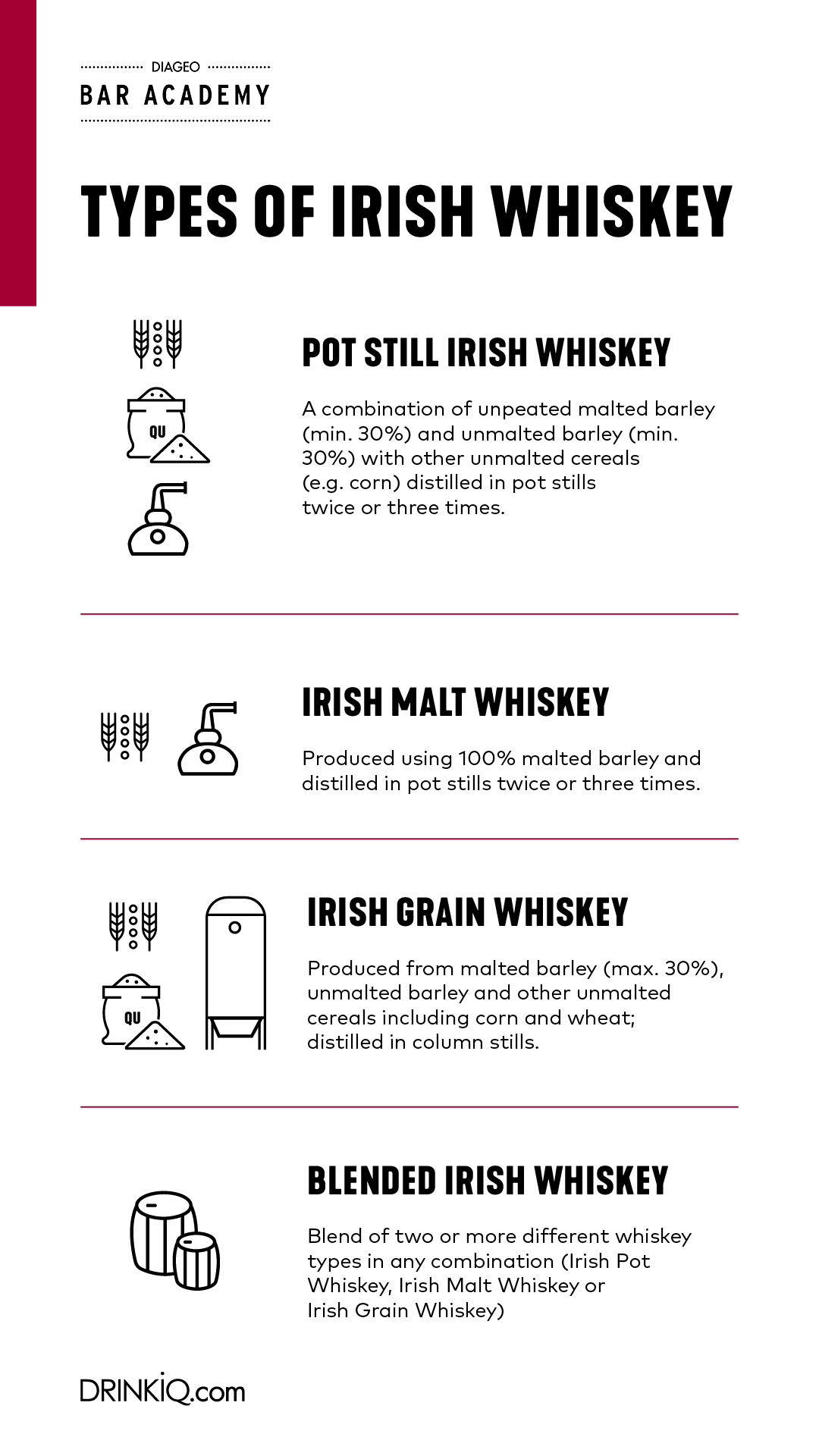
RELATED CONTENT

Roe & Co Highball
Sweet, sharp and smooth.... a great drink!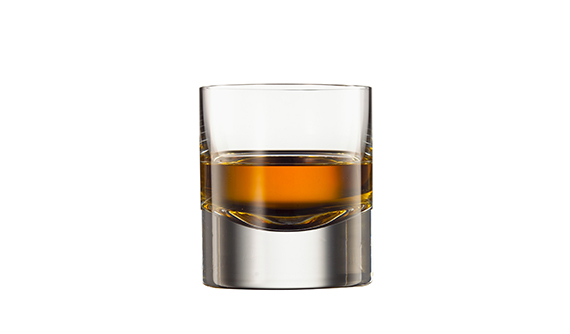
Roe & Co Neat
A vibrant sip of summer! An enticing combination of Ketel One Vodka with Pimm's No.1 Liqueur, a Dash of Bitters, fresh Cucumber and a splash of Lemon-Lime Soda - delightfully clean and crisp!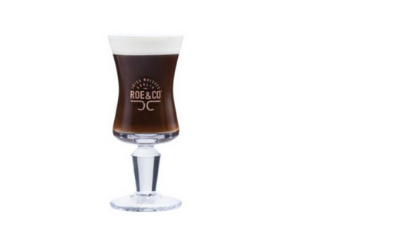
Roe & Co Irish Coffee
Add a little 'Irish' to your coffee with this decadent recipe from Roe & Co.
